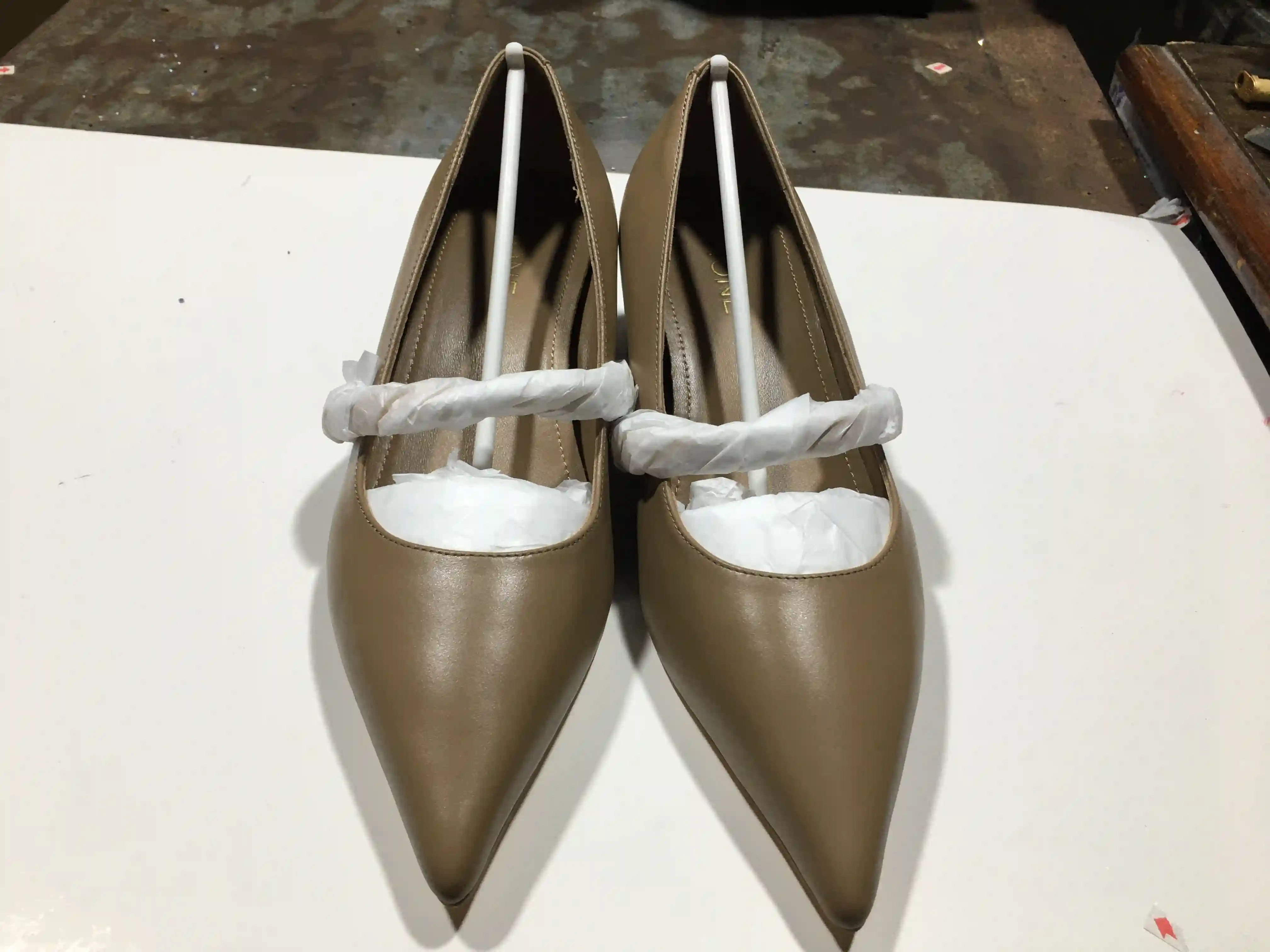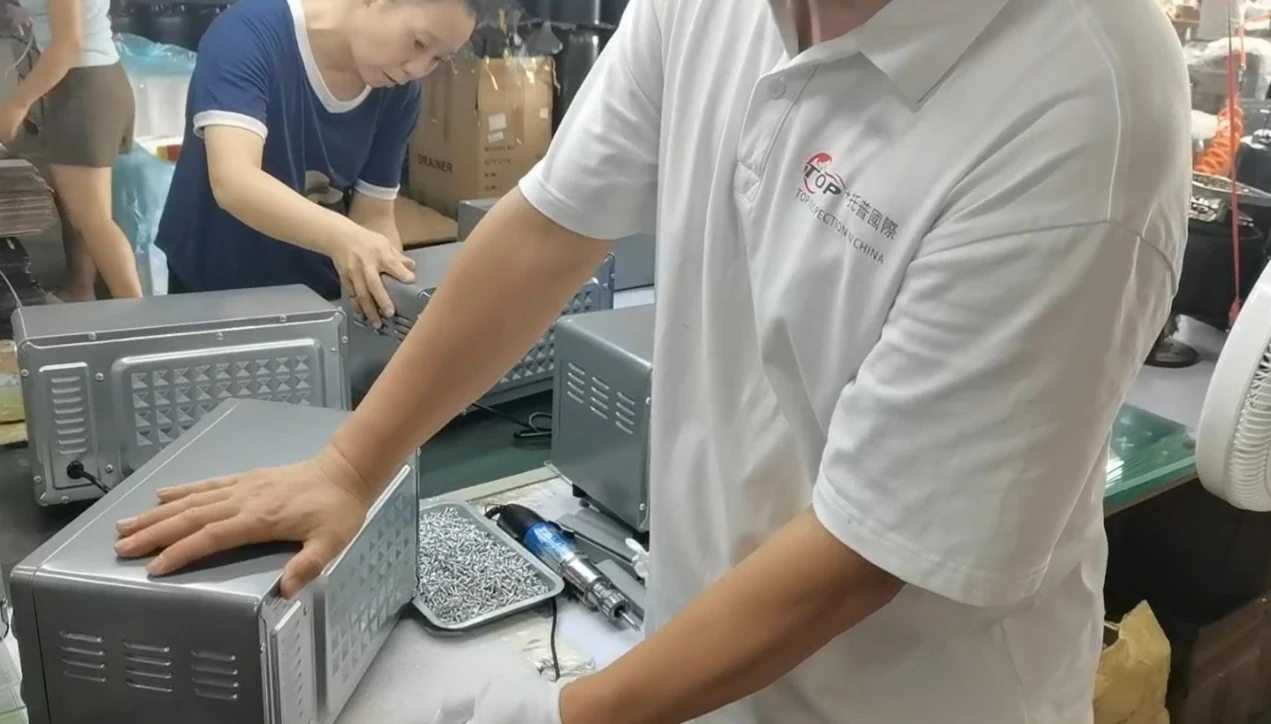Footwear Inspection
Our footwear inspection services safeguard your brand by verifying product quality before shipment.
https://www.topinspection.net/Footwear.html
Shoes are, as the name suggests, items worn on the feet to protect them from injury and ensure comfort. As an essential part of daily life, shoes are a necessary item, and their inspection and testing are of paramount importance to ensure they meet the required standards of quality, safety, and comfort. Here will introduce the key aspects offootwear inspection, specifically forshoe inspection, providing a detailed overview of the standards and procedures involved in ensuring the quality of men's, women's, and children's shoes.
Footwear Inspection Standards
The inspection of footwear is divided into three primary categories:Men Shoes Inspection,Women Shoes Inspection, andChildren Shoes Inspection. Each category has its own set of criteria based on the unique design, material, and functionality required for that specific type of footwear.
1.Men Shoes Inspection
A. Upper and Surface Considerations:
-
Leather Quality: The leather must not be loose or have defects such as insect marks, scratches, or mildew spots. Pay close attention to the condition of the shoe head, cover, and outer waist to ensure no material flaws.
-
Shoe Head Alignment: Ensure that the shoe head does not have misalignment or improper stitching. The seams at the heel and around the waist should be precise.
-
Threading and Stitching: There should be no loose threads, broken threads, or missing stitching. Ensure that there are no skipped stitches or areas without any stitching.
-
Color Consistency: Compare the color of the shoe with the sample to make sure there are no color differences. Also, check the gloss level and abrasion resistance of the surface.
-
Logo and Branding: Ensure that the logo or brand name on the shoe is correct and that no letters are missing.
B. Sole and Bottom Considerations:
-
Adhesion and Durability: Ensure that the glue or adhesive used between the shoe upper and sole is of sufficient quality. The bond should be strong and the adhesive should not be missing or uneven, especially on the edges.
-
Sole Condition: The sole should be free of any visible defects such as uneven surfaces, dents, or punctures. It should also be sufficiently flexible and resistant to wear.
-
Heel Testing: Check that the heel of the shoe is securely attached. It should pass the stress and shock resistance tests.
C. Durability Testing:
-
Abrasion Resistance: Perform abrasion resistance tests to ensure the material withstands repeated use and stress.
-
Cold Flexibility: Ensure that the materials used do not become brittle or cracked under low temperatures.
2.Women Shoes Inspection
A. Upper and Surface Considerations:
-
Surface Damage: Inspect for scratches, tears, or other surface damage on leather, fabric, or synthetic materials used in the upper part of the shoe.
-
Shoe Shape: Ensure that the shoe is not misshapen and that the seams are straight and neatly sewn.
-
Color and Appearance: Check that there is no color fading or significant color variation between the samples and finished product.
-
Fit and Comfort: Measure the shoe length, width, and height to ensure they match the required specifications and that the shoe fits comfortably without causing discomfort.
B. Sole and Heel Considerations:
-
Sole Materials: Inspect whether the material used for the sole is durable and meets the required standards for friction and wear resistance.
-
Heel Integrity: Check that the heel is securely attached and does not wobble or come loose. Perform an impact test to ensure it can withstand typical pressure during walking.
C. Decorative Elements:
-
Ornamentation: Ensure that decorative items such as beads, sequins, or metal embellishments are securely attached and do not come off easily.
-
Embroidered Details: Verify that the stitching on embroidered designs is neat, even, and durable.
3.Children Shoes Inspection
A. Upper and Surface Considerations:
-
Safety and Durability: Children’s shoes should have a soft but durable upper material that does not have any sharp edges or rough textures. Check for any stitching or material defects that could cause discomfort or injury.
-
Material and Color Consistency: Make sure that the material does not contain harmful chemicals and that the color and fabric are consistent across the shoe design.
-
Fasteners and Closures: The straps, laces, or Velcro should be secure, and any fasteners should be strong enough to withstand frequent use.
B. Sole and Comfort Considerations:
-
Sole Thickness and Material: Ensure that the sole is appropriate for children’s needs, offering good grip and cushioning. The sole should not be too thin or stiff, allowing natural foot movement.
-
Fit and Comfort: Check that the shoe fits well, with no tight areas that could cause discomfort or injury. It should allow enough space for the foot to move and grow.
C. Safety and Functionality:
-
Reflective Elements: For children’s shoes that will be used outdoors, reflective materials can add a safety feature, making it easier for drivers to see them.
-
Elasticity and Flexibility: Shoes should be flexible enough to allow easy walking and running, which is crucial for young children’s development.
Common Shoe Inspection Issues and Quality Checks
Regardless of the type of shoe,shoe inspectionoften focuses on identifying specific issues that can affect the shoe's durability, comfort, and overall quality. Common problems that may arise during thefootwear inspectionprocess include:
-
Incorrect Stitching or Loose Threads: Loose or uneven stitching can lead to premature wear and tear. It’s crucial that stitching is even, tight, and secure to prevent parts of the shoe from unraveling or separating.
-
Sole Issues: Improperly attached soles or defects such as loose heels or warped soles can affect the overall integrity of the shoe. The sole should be well-attached and should have sufficient grip to prevent slipping.
-
Material Defects: Leather, fabric, or synthetic materials should be free of scratches, discoloration, or tears. Any defects in the material could not only compromise the shoe's appearance but also its functionality.
-
Sizing Problems: Incorrect sizing can make the shoes uncomfortable or impossible to wear. It’s important to ensure that the shoe fits the foot comfortably and that size charts are properly followed.
-
Finish and Appearance: The final look of the shoe, including the color, texture, and overall aesthetic, should be free from defects. This includes ensuring that logos, patterns, and embellishments are correctly positioned and attached.
Ensuring that shoes are properly inspected before they reach consumers is essential for maintaining product quality and consumer satisfaction. Whether you are looking to performMen Shoes Inspection,Women Shoes Inspection, orChildren Shoes Inspection, following the outlined standards and best practices will help guarantee that each pair of shoes meets the highest quality standards. By partnering with a trustedshoe inspection company, manufacturers can streamline their production process and minimize the risks of defective products, ensuring that customers receive shoes that are safe, comfortable, and long-lasting.
For more information or to inquire aboutfootwear inspection, don't hesitate to contact TOP International Inspection. We are dedicated to ensuring that your products meet the highest standards of excellence.



Reviews
There are no reviews yet.